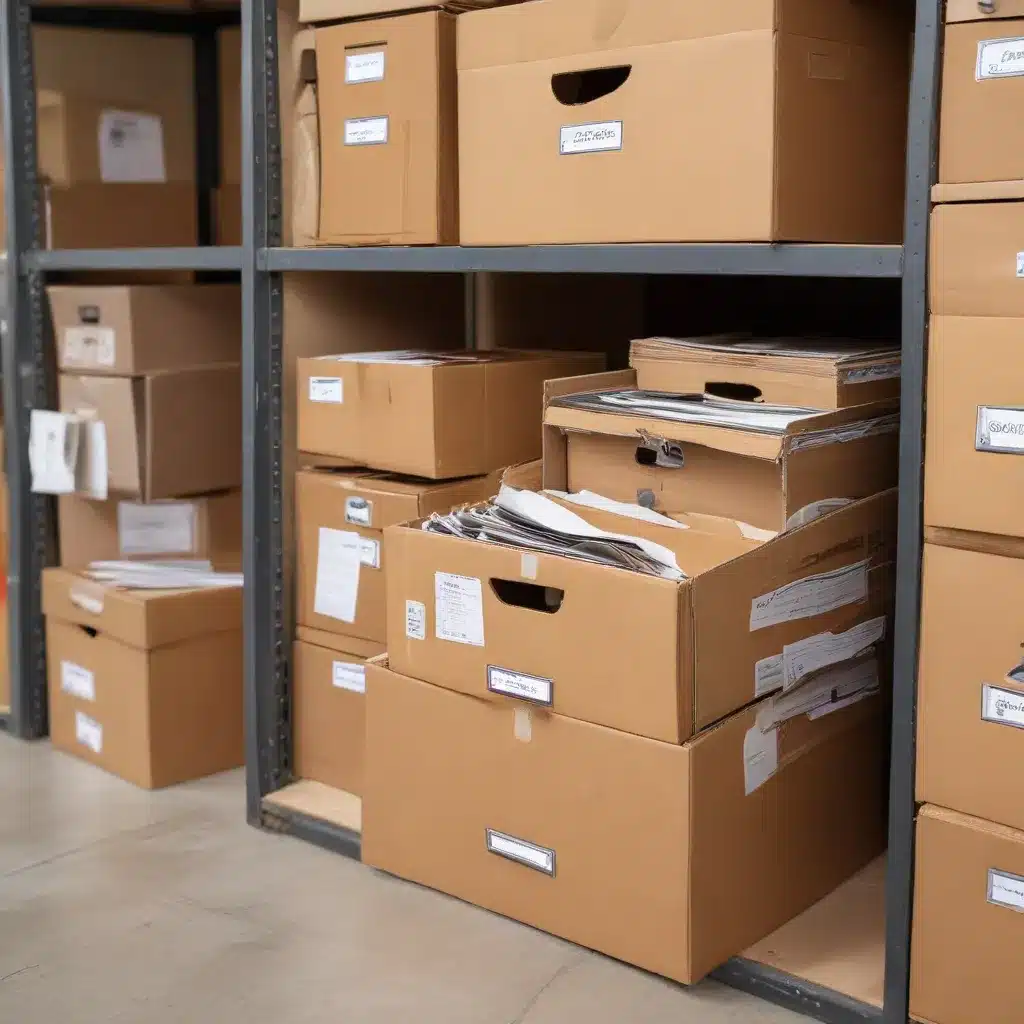
‘Mastering Safe Storage: DIY Tips for Properly Handling and Storing Valuable Items and Documents’
Proper storage and handling of valuable items and important documents is crucial for preserving their condition and preventing loss or damage. Whether you’re a homeowner looking to safeguard your family heirlooms or a business owner managing sensitive records, implementing the right storage practices can make all the difference.
Valuable Items and Documents
Your most prized possessions, from fine jewelry to irreplaceable artwork, require specialized care and attention. Similarly, critical legal, financial, and personal documents must be secured against both physical and digital threats. Understanding the unique storage needs of these valuable assets is the first step toward keeping them safe.
Types of Valuable Items
Jewelry and Precious Metals: Rings, necklaces, watches, and other jewelry made from gold, silver, or platinum are not only financially valuable but often hold deep sentimental worth. These items are susceptible to tarnishing, scratches, and even theft if not properly stored.
Artwork and Collectibles: Paintings, sculptures, antiques, and other collectibles can be extremely fragile and sensitive to environmental factors like light, humidity, and temperature. Improper storage can lead to fading, warping, or even complete deterioration.
Electronics and Gadgets: From smartphones and tablets to laptops and cameras, electronic devices represent a significant investment. Protecting them from physical damage, moisture, and dust is essential to ensuring their longevity.
Types of Valuable Documents
Financial Records: Bank statements, investment portfolios, tax returns, and other financial documents contain sensitive information that must be safeguarded against identity theft and data breaches.
Legal Documents: Contracts, deeds, wills, and other legal paperwork are crucial for protecting your rights and assets. The loss or damage of these documents can have serious legal consequences.
Personal Identification: Passports, birth certificates, and Social Security cards are irreplaceable forms of identification that must be kept secure to prevent fraud and other identity-related crimes.
Safe Storage Practices
Ensuring the long-term preservation of your valuable items and documents requires a multifaceted approach that addresses both the physical and digital aspects of storage.
Storage Environment
Temperature and Humidity Control: Extreme temperatures and fluctuating humidity levels can have a detrimental effect on many valuable items, leading to warping, discoloration, and even mold growth. Maintaining a stable, climate-controlled environment is essential.
Pest and Contaminant Prevention: Insects, rodents, and other pests can cause significant damage to your valuables, while exposure to dust, dirt, and other contaminants can lead to wear and tear. Proper sealing and regular cleaning of storage areas are crucial.
Organizational Techniques
Labeling and Categorization: Organizing your valuables into clearly labeled, categorized containers or folders makes it easier to locate specific items or documents when needed. This also helps maintain the overall integrity of your storage system.
Secure Containerization: Storing valuable items in archival-quality boxes, folders, or other protective containers can shield them from environmental factors and prevent physical damage. For documents, consider using acid-free, lignin-free materials.
Access Control
Physical Security Measures: Keeping your valuables in a locked safe, cabinet, or storage unit can deter theft and unauthorized access. Consider installing additional security features like alarms or surveillance cameras for added protection.
Digital Access Restrictions: For digital documents and records, password-protection, encryption, and secure cloud storage can help prevent data breaches and ensure the confidentiality of your sensitive information.
Handling Precautions
Proper handling techniques are essential for maintaining the condition of your valuable items and documents, whether you’re storing them, transporting them, or accessing them regularly.
Proper Packaging
Archival-Quality Materials: When storing or transporting valuable items, use acid-free, lignin-free materials like archival-grade boxes, folders, or sleeves to prevent damage from chemicals or contaminants.
Cushioning and Protection: Fragile items, such as artwork or electronics, should be carefully wrapped in soft, non-abrasive materials to absorb any shocks or impacts during handling or transport.
Transportation Guidelines
Secure Transport Methods: When moving valuable items or documents, use a secure, locked container or case, and consider hiring a professional courier service for added protection.
Chain of Custody Tracking: Maintain a detailed record of who has handled your valuables and when, ensuring accountability and making it easier to trace any potential issues.
Inventory Management
Regular Inspections: Periodically review your stored items and documents to check for any signs of damage or deterioration, allowing you to address issues before they become more serious.
Backup and Duplication: For critical documents, create digital or physical backups to ensure that you have a secondary copy in the event of loss or damage to the original.
Long-Term Preservation
Safeguarding your valuable items and documents for the long term requires a comprehensive approach that addresses both immediate and future needs.
Climate-Controlled Storage
Temperature and Humidity Monitoring: Maintain a consistent temperature and humidity level in your storage area, regularly monitoring and adjusting as needed to prevent environmental damage.
Preventative Maintenance: Regularly service any climate-control equipment, such as dehumidifiers or air conditioning units, to ensure they continue to function effectively and protect your valuables.
Digitization and Conversion
Scanning and Imaging: Convert physical documents into high-quality digital files, which can be more easily backed up and accessed remotely, reducing the risk of loss or damage to the originals.
Digital File Management: Carefully organize and store your digital files, using appropriate file naming conventions, metadata, and secure cloud storage or external hard drives to maintain their integrity.
Disaster Preparedness
Risk Assessment and Planning: Evaluate the potential threats to your valuables, such as natural disasters, fire, or water damage, and develop a comprehensive emergency response plan to mitigate these risks.
Emergency Response Protocols: Ensure that you and your family or employees are familiar with the steps to take in the event of a disaster, including the safe evacuation of valuable items and documents.
By implementing these safe storage and handling practices, you can protect your most prized possessions and critical records, ensuring that they remain in pristine condition for years to come. For any specialized assistance or advice, consult with a professional locksmith or document management expert in your local area.


